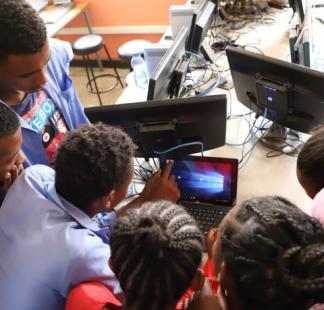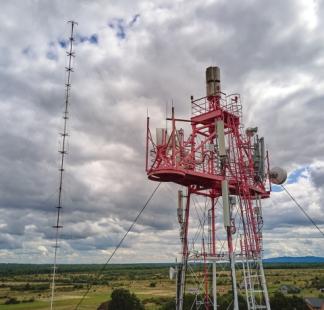- Chukwuemeka Ejiofor
- Ahmed Atere
- Israel Baiye
- Jedidiah Ogwumike
- Emmanuel NIYIKORA
- Paulinus Okechukwu UGWOKE
Intermediate
- Bank transfer
- Credit card
Description
This course is designed to develop IT professional's knowledge and skills to scope, initiate, deliver and close a fiber optic project, in time, on budget, and to the highest quality specifications. Some of the topics to be discussed include tools and techniques for planning, design and implementing. FTTH, Campus, Backbone and Submarine Systems and other systems. The skill set garnered in this training will no doubt provide an impetus for a robust and resilient fiber network performance and higher skills.
The training is aimed at the following IT professionals
Project managers for fiber optic network projects
Designers of fiber optic communications networks
Managers, owners and users of fiber optic communications networks
Contractors and techs who install, operate and maintain fiber broadband networks.
Regulatory officers in the fiber industry
This course is an advanced course; therefore, it requires a fundamental industrial knowledge on fiber optic implementation.
Upon completion of this course, participants will be able to:
Produce a Project management Plan document for fiber deployment (Gantt Chart)
Identify and Management stakeholder for a success deployment
Calculate Optical link loss budget (Calculating total link loss)
Identify, choose and Procure Optical Fiber system components
Schedule Deployment of optical fiber activities on various route types
Produce the Acceptance criteria of an optical fiber deployment for contractors
Produce a maintenance documentation for fiber systems
The course (2 weeks duration) study method involves the following:
Course Materials: The relevant course material (Presentations) and pre-recorded video is made available on the ITU Academy learning portal at the beginning of the course to facilitate self-study. Each week is based on 2 hours of lectures-presentations per week.
Online Discussion Forums: discussion forums are organized weekly at the ITU Academy based on discussions topics and case studies. Students are highly encouraged to participate and interact with instructors and other students (e.g., forum participation, Moodle messenger, etc.).
Chat Sessions: weekly live chat sessions via Zoom platform (2pm CEST) with the students to facilitate questions about the material covered for the week and the assignments. The dates for the live chat session(s) will be communicated to participants on the first day of the course.
Quizzes: One mandatory online quiz (i.e., multiple choice questions) at the end of each week.
Assignment. A downloadable Word document Template is provided for submission case study research assignment on the ITU Academy.
The participants will be evaluated according to their substantive posts on the discussion forum, active participation in the online chat sessions, and other course activities, reflecting both the quantity and quality of time spent on the course. Two quizzes at the end of the two weeks (i.e., week 1 and week 2), and one Individual Assignment to be submitted and graded. Templates outlining the format for the assignment submission will be provided via the ITU Academy platform. Each quiz will be multiple choices questions suitable for evaluation of course participants through the ITU Academy platform. The maximum grade for the course will be 100 points. The evaluation details and criteria for earning certificates are as follows.
A total score of 70% and above is required to obtain the ITU course completion certificate, through the following evaluation parameters:
- 2 quizzes (25% per quiz)
- Individual Assignment 20%
- Two Chat Sessions 15%
- Two Discussion Forums 15%
Week 1/ Module 1
Optical Fiber Theory:
What are optical fibers?
History of optical fibers (History of development of glass as light carrying medium)
Principles of information
Optical fiber principles
Fiber amplifiers (Erbium technology) Passive Fiber components
Fiber fabrication, cabling, accessories and limiting factors on optical fibers
Types of optical fibers (SM and MM)
The participants should be able to:
describe the Optical network system
Reading of the PDF slides uploaded in the course page for module 1
Post their questions or ideas to the discussion forum.
Watch recorded and uploaded videos (if applicable)
NB: need to pay attention to the course announcements on participants panel and email, more especially live zoom sessions (dates will be communicated on day 1 of each week).
Week 1/ Module 2
End-to-End Optical Network Infrastructure
Architecture & Infrastructure
Optic Drivers
EDFAs, Optical Switches WDM and DWDM Equipment
Network Architectures
The participants should be able to:
describe and demonstrate the system topology and design scenarios
describe and demonstrate the system topology and design scenarios
describe and compute the Power budget
Reading of the PDF slides uploaded in the course page for module 2
Post their questions or ideas to the discussion forum.
Attend a live zoom session (dates will be communicated on day 1 of each week).
Watch recorded and uploaded videos (if applicable)
Week 1/ Module 3
PLANNING: Optical Fiber Network Planning & Design: Concept /Design
Optical fiber system requirement
Essential elements of a fiber link
System definitions
Optical link loss budget (Calculating total link loss)
Optical Fiber system components (Transmitter, multiplexer, fiber link, de-multiplexer,
receiver, amplifier)
Network types
Survey of routes
Compare different installation options
Layout of an optical fiber cable network (Equipment, ODF, Cable, Splices)
Optical fiber cable design and manufacturing
Optical fiber cable types
Optical fiber cable specifications and cable type testing
The participants should be able to:
- explain the different FIber component define a specific design scenario
Week 1/ Module 4
Fiber Optic Project Management
What is fiber Project Management?
Defining fiber Project constraints
Roles of a Project Manager
Overview of fiber Project documentation
Combining Project areas
Producing the Project plan
Planning the execution
Mastering change control
Scope Management
Defining the scope and system requirement for fiber deployment
Producing the fiber scope of works
Verification of scope
Preventing scope creep with effective change control
The participants should be able to:
define fiber optic Project Management.
describe the fiber optic Project management criteria
explain fiber Project constraints
describe the roles of a Project Manager in fiber optic network implementation and management
describe how fiber Project documentation is done
produce a fiber optic Project plan and scope of work
Planning the execution
Week 2/ Module 5
Deployment of Optical Fiber in the Network
Deployment of optical fiber cables on shared routes (e.g Railways and Power routes)
Aerial installations of optical fiber cables
Underground installations of optical fiber cables
Direct burial of optical fiber cables
Key applications of different optical fiber cable types
The participants should be able to:
demonstrate the deployment of Optical fiber using a case study.
describe how Acceptance and maintenance of Optical fiber after deployment
Reading of the PDF slides uploaded in the course page for module 5
Post their questions or ideas to the discussion forum.
Watch recorded and uploaded videos (if applicable)
Datasheet evaluation and Workbook (case studies)
Week 2/ Module 6
Fiber Risk Management /Link Test
Defining risk
Risk Identification
Quantifying risk
Developing risk responses
Devising risk response controls
Human Resource Management
Workforce management
Stakeholder management
Team development
Week 2/ Module 7
Time Management
Defining the tasks
Task estimation
Scheduling tasks
Resource Allocation
Cost Management
Resource planning
Cost Estimating
Cost budgeting
Cost control
Use of budgeting tools
Week 2/ Module 8
Fiber Communications Management
Developing communication strategies
Conflict resolution
Stakeholder analysis
Communications planning
Effective information distribution
Fiber Project Closure Management
Developing communication strategies
Conflict resolution
Stakeholder analysis
Communications planning
Effective information distribution












